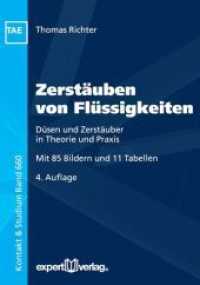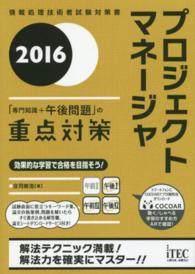- ホーム
- > 洋書
- > ドイツ書
- > Humanities, Arts & Music
- > Linguistics
- > general surveys & lexicons
Full Description
This book introduces and explains the production-oriented approach (POA) to teaching foreign languages, a new approach developed by the author through 15 years of rigorous experimentation. Addressing the common challenge of separating input from output in language learning, the book details POA procedures in three phases: motivating, enabling, and assessing. It explores the theoretical underpinnings of the POA, including sociocultural, usage-based linguistic, second language acquisition, and curriculum theories. The author presents a series of case studies showcasing the POA in practice. She also provides a comparative analysis with the task-based approach and project-based learning, highlighting similarities and differences between the two. This book will be essential reading for teachers and scholars in applied linguistics, modern foreign languages, language acquisition, and language education, offering valuable insights and practical guidance for enhancing language teaching effectiveness.
Contents
Part I Background.- Chapter 1: The post-method era and the need of a new approach.- Chapter 2: Major problems in foreign language teaching in China.- Chapter 3: Motivations for the production-oriented approach (POA).- Part II POA theory.- Chapter 4: Theoretical basis.- Chapter 5: A general description of the POA.- Chapter 6: Principles of the POA.- Chapter 7: Hypotheses of the POA.- Chapter 8: Teaching procedures of the POA.- Part III POA practice.- Chapter 9: Motivating.- Chapter 10: Enabling.- Chapter 11: Teacher-student collaborative assessment (TSCA).- Chapter 12: The use of POA teaching materials.- Part III Unique features of the POA.- Chapter 13: The comparison of the POA with other approaches.- Chapter 14: Conclusion.








